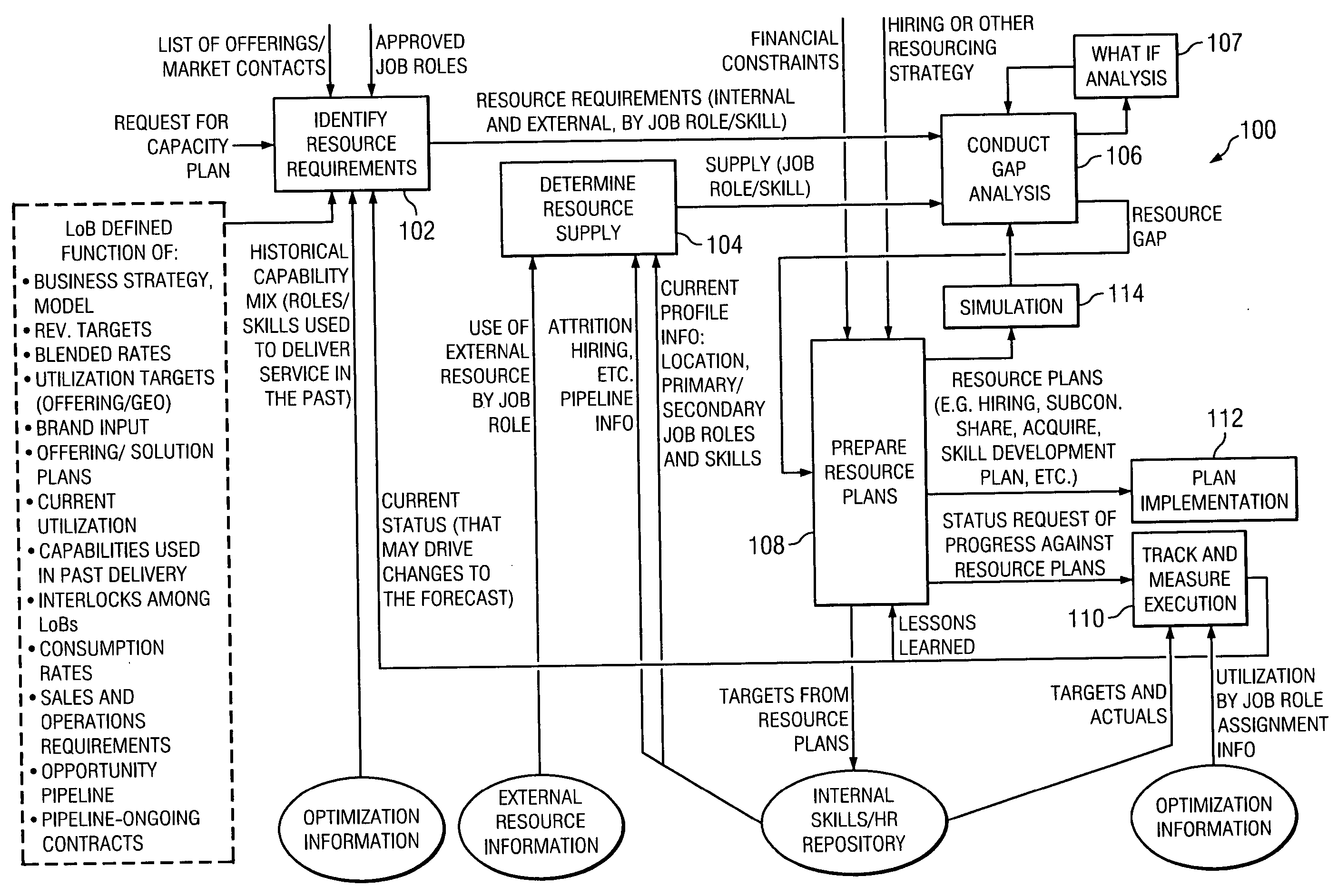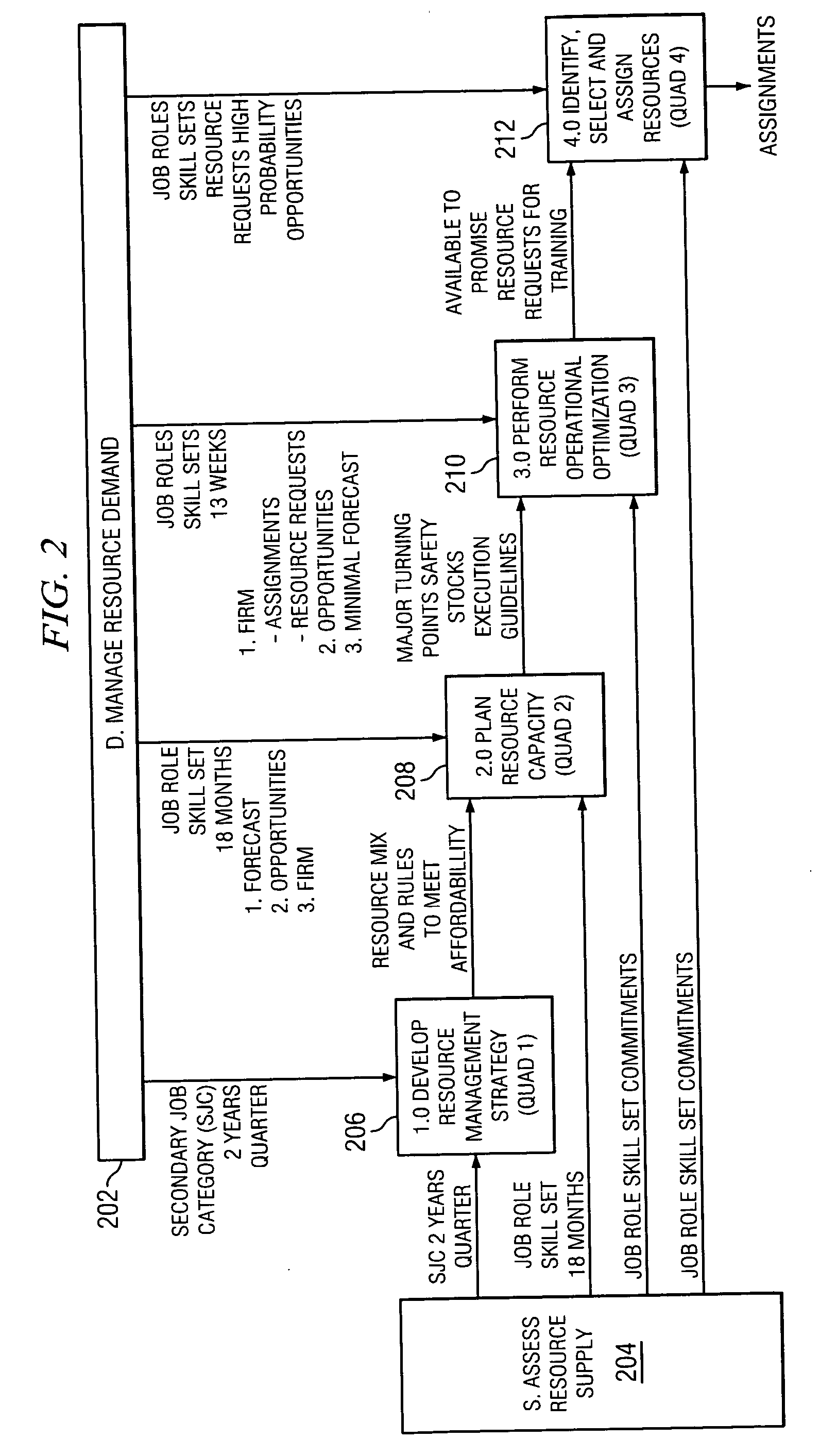Resource capacity planning
a technology of resource capacity and planning, applied in the computer field, can solve the problems of rarely accurate adaptations and rarely implemented adaptations such as providing specialized training to current or prospective employees, and achieve the effect of reducing predicted future labor shortages
- Summary
- Abstract
- Description
- Claims
- Application Information
AI Technical Summary
Benefits of technology
Problems solved by technology
Method used
Image
Examples
Embodiment Construction
[0023] With reference now to the figures, and in particular to FIG. 1, there is depicted a block diagram showing five key processes of a Resource Capacity Planning (RCP) process 100.
[0024] A first key process is shown as process 102, (Identify Resource Requirements), in which resource requirements for a job project are identified. Process 102 is preferably performed by a demand administrator, who enters the individual elements of resource demand requirements, including those from ongoing work engagements, prospective work opportunities, and impending work offerings, along with associated staffing structures. Preferably, a demand planner actually creates an overall demand plan, based on demand data generated by process 102. Parameters for construction of a demand statement created by process 102 are preferably provided by line managers.
[0025] To determine the resource requirements for a job project, process 102 accepts as inputs a list of offerings / market contracts (impending or pe...
PUM
 Login to View More
Login to View More Abstract
Description
Claims
Application Information
 Login to View More
Login to View More - R&D
- Intellectual Property
- Life Sciences
- Materials
- Tech Scout
- Unparalleled Data Quality
- Higher Quality Content
- 60% Fewer Hallucinations
Browse by: Latest US Patents, China's latest patents, Technical Efficacy Thesaurus, Application Domain, Technology Topic, Popular Technical Reports.
© 2025 PatSnap. All rights reserved.Legal|Privacy policy|Modern Slavery Act Transparency Statement|Sitemap|About US| Contact US: help@patsnap.com



